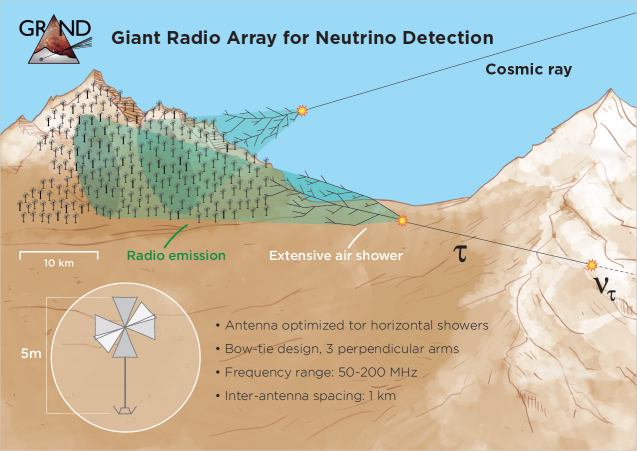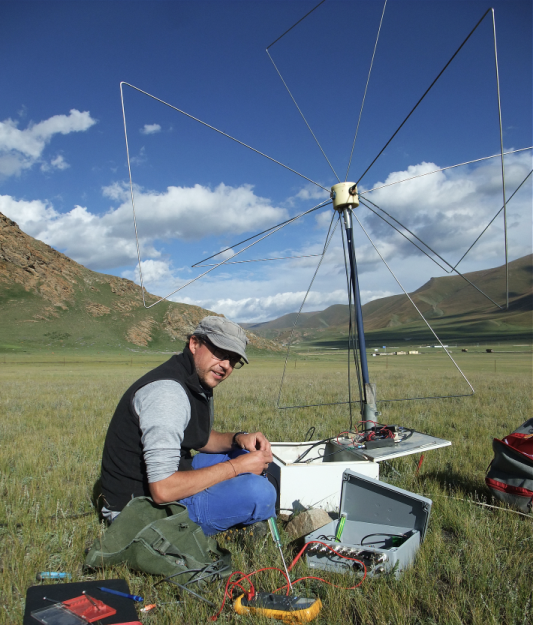Detection Principle
Earth-skimming cosmic
ντs can produce
τ particles underground through charged-current interaction.
τs travel to the surface of the Earth and decay in the atmosphere, generating extensive
air showers (EAS). Coherent electromagnetic radiation is associated to the shower development at frequencies of a few to hundreds of MHz at a detectable level for showers with
E > 10
17 eV. The strong beaming of the electromagnetic emission combined with the transparency of the atmosphere to radio waves allows the radio-detection of EAS initiated by
τ decays at distances up to several
tens of kilometers. Inclined showers can leave footprints of several kilometers on the ground after traveling such large distances in the atmosphere, allowing a sparse antenna distribution.

Why Radio?
● A mature and autonomous technique rivaling with standard techniques, as demonstrated by AERA, LOFAR, Tunka-Rex, and TREND. ● Well-adapted for the detection of inclined showers, as induced by neutrinos: radio waves are not attenuated in the
atmosphere, leading to 100-km² radio footprints on the ground, tens of kilometers away from the shower source. ● Radio antennas are cheap and robust: ideal for the deployment of giant arrays.

Preferred sites
GRAND antennas are foreseen to operate in the 30‑200 MHz frequency band. Short wave background prevents detection below this range, and above the coherence of the geomagnetic emission fades. Remote sites, with low electromagnetic background, should obviously
be considered for the array location. In addition, mountain ranges are preferred, first because they offer an additional target for the neutrinos, and also because mountain slopes are better suited to the detection of horizontal
showers compared to flat areas, parallel to the showers trajectories.



